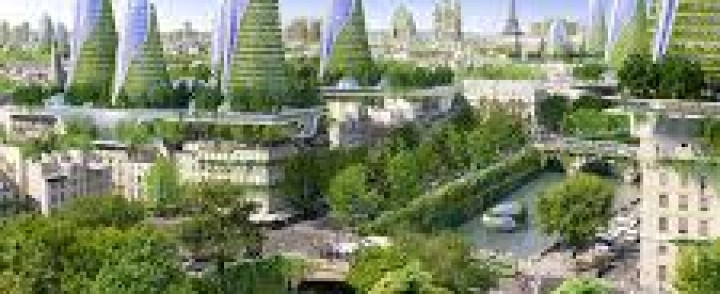A new approach to designing smart cities
One day, I’d like to design a truly modern, functional city with the character of a medieval hill town. Rather than a blueprint, I’d like to design a series of recipes for how to create it, from the community to individual human level, from street plans to door handles. This outlines how and why that approach could work, compared to how cities are designed today.
The most useful skill I learned as an architect was the ability to zoom in and out of scales, to be able to care about the design of a door handle or a masterplan at the same time, by keeping a map of everything in mind at any one time. In other words, to ‘grok’ things. If you designed a fruitcake the way buildings are, you would specify the coordinates of every nut and raison. every cake would look the same and there would be something distinctly non artisanal about it.
Nobody designs a fruitcake by specifying the coordinates of its ingredients. But cakes aren’t designed, they are created from recipes and the end result is slightly different for each one because of the action of the person applying the recipe and subtle variations in the environment. The more a product made from a recipe is connected to individual human interaction and its local environment, the more local and artisanal it looks, and people often pay a premium for hand made artisanal products rather than factory made ones.
To summarise: things made from a recipe rather than a design have more character, and hand made things made from recipes have even more character, still. Mass produced cakes don’t tend to be premium products in the way that, say, iPhones are.
Things created by recipes rather than by design have characteristics that are similar to the natural world, ie they are ‘organic’, everything is slightly different but based on the same pattern.
Some of the patterns we see in the built environment, and how they relate to each other were famously described by Christopher Alexander in A Pattern Language. Alexander’s patterns codify not only the objective attributes about form and function but the subjective and emotional ones. For example, one pattern explains how pools of light directly over tables in restaurants create intimacy. Because the patterns have diagrammatic and verbal descriptions, they codify the human made environment so it can be recreated, like recipes. Also, because the various patterns describe how they relate to each other, they form the syntax of a type of language — a pattern language.
A Christopher Alexander pattern. Alexander is more highly regarded among software designers than architects as he is often used to show how some of the concepts of object oriented programming are applied in other disciplines. People often feel more at home in organic environments built up over time following patterns rather than sterile, overtly planned design. Jane Jacobs understood this well and it drove her efforts to protect the organic character of Manhattan’s West Village.
Not everything should be organic, however. An artisanal iPhone wouldn’t have sufficient scale for it to be functionally great and non high-tech aesthetics would tend to be kitsch by being skeuomorphic — ie having a form that pretends to be something it isn’t such as being made of wood. Some things actually become disturbing when they are organically designed and David Cronenberg created good examples of this in the film eXistenZ. Like most things, there is no hard and fast rule and the design of cities works best with a balance of geometric design and organic vernacular that offset each other. There is no better example of this than New York’s Central Park with its simple rectangle containing a romantic landscape.
Not all organic design is pleasing. The organic games console in the movie eXistenZ looks like a deformed new born still connected to its mother by an umbilical cord. It has aesthetic qualities that are instinctively disturbing as they sit in the uncanny valley between natural and designed.
For examples of how highly geometric or minimalist modernism work well when balanced with an organic environment, the trees or sculpture in a Mies van der Rohe design are critical components, and an elegantly designed building created from standard industrial parts such as the Eames’ house works best surrounded by the dappled light from trees.
Mies van der Rohe designs wouldn’t be as effective without the very deliberately selected organic elements such as figurative bits of sculpture or trees. Trees are an integral part of why the Eames’ house design works so well. The Eames house in a barren industrial estate, surrounded by similar, albeit less elegant, sheds wouldn’t work so well.
New cities haven’t tended to be designed from scratch, from recipes because of the constraints of infrastructure. Medieval hilltop towns that grew organically were difficult to justify as blueprints for transport and utility networks. This functional need for highly ordered city plans is changing, however, as information technology allows communication that is independent of the physical environment, and intelligent automation allows point to point physical movement in self directed pods rather than mass transit on fixed arteries. Specifically, ubiquitous, GPS enabled smartphones remove entirely the concept of ‘getting lost’, and route programmed self driving cars and mesh network power grids enable organic city layouts to replace grids. Cities of the industrial age looked mechanical, cities of the information age can look like fractal networks — like nature.
Continue reading:
https://medium.com/design-matters-4/a-new-approach-to-designing-smart-cities-b33443a4d968
- How to build future cities?



